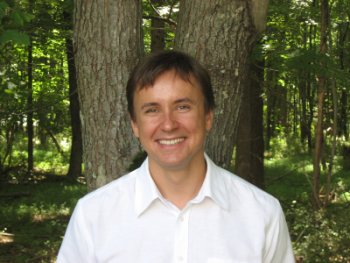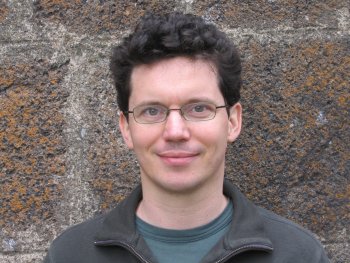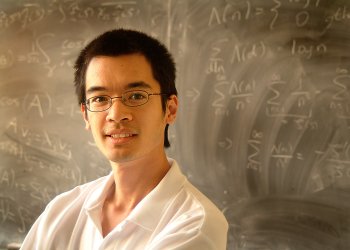
The Fields Medals 2006
On Tuesday the 22nd of August the most prestigous prize in mathematics — the Fields Medal — was awarded to four mathematicians at the International Congress of Mathematicians in Madrid. The Fields Medal is akin to the Nobel Prize in the honour it bestows on its recipients, and is awarded to up to four mathematicians every four years, whenever the Congress meets. But this year its award stirred up the mathematical community more than ever before: one of the awardees, the Russian mathematician Grigory Perelman, refused to accept it.

Grigory Perelman
Perelman had sparked widespread speculation about his imminent refusal by not replying to an invitation to speak at the Congress, and the speculations were confirmed by his failure to turn up at the award ceremony. There was no official explanation as to why he declined the honour, but rumours abound, quoting his reclusive nature and distaste for self-promotion, as well as personal problems with the maths community. It has been reported that Perelman now lives with his mother in St Petersburg, unemployed after having resigned his post at the Steklov Mathematics Institute in Moscow at the beginning of the year. This is the first time that the Fields Medal was declined, and it's as close to a scandal as the world of maths is ever likely to get.
Perelman was awarded the Medal for his contribution to proofs of two of the most significant open problems in topology: the Poincaré conjecture and Thurston's Geometrisation conjecture. Both conjectures concern the structure of three-dimensional surfaces, in other words boundaries of four-dimensional objects. The Poincaré conjecture is best described by stepping down a dimension and looking at the surface of a sphere, which lives in three-dimensional space but itself is two-dimensional. This surface has two important properties: it has no boundary — when you walk around on it you will never fall over an edge — and when you tie a piece of string around a sphere you can always slide it off. (This latter property doesn't hold for a doughnut, for example, since a string tied through its hole can only be removed by cutting.) These two properties continue to hold when you deform the sphere without cutting or tearing; for example, they also hold for an egg or for a deflated football. The important point, which mathematicians have known for a long time, is that any two-dimensional surface that satisfies the two properties can be deformed into a sphere. Once you know that your surface has these two properties, you know that you're essentially dealing with a sphere, if a somewhat squashed one.
In 1904, the French mathematician Jules Henri Poincaré conjectured that an analoguous result is true for three-dimensional surfaces, and this conjecture carries his name to this day. Thurston's Geometrisation conjecture (named after the mathematician Bill Thurston) is slightly more general: it characterises not only the surface of a sphere in four dimensions, but all four-dimensional surfaces.
Perelman seems to have clinched the Poincaré conjecture with three papers published in 2002 and 2003. Although his proof has not yet been fully checked, mathematicians seem confident that it is correct and that Perelman's techniques can also beat Thurston's conjecture. Alas, there is no hero to celebrate, and it seems likely that Perelman will also refuse the million Dollars promised by the Clay Mathematics Institute to the first person to prove the Poincaré conjecture.
But while Perelman was the one to grab the column inches, presumably unintentionally, the three other winners, 37 year old Russian Andrei Okounkov, 31 year old Australian Terence Tao and 38 year old Frenchman Wendelin Werner, deserve no less attention. As is usually the case with the Fields Medal, the prize in each case was awarded for a body of work, rather than one particular result.

Andrei Okounkov
Andrei Okounkov was awarded the medal "for his contributions bridging probability, representation theory and algebraic geometry". Although Okounkov's work is very varied indeed, there are two main themes that occur repeatedly: the notion of randomness and the idea of permuting, in other words rearranging, the set of numbers from 1 to n. These two concepts touch on each other when you consider mathematical objects that have a very large and complicated structure. You can ask, for example, in how many ways you can permute the elements that form the structure, and what happens when you do so at random.
Armed with his insights into these two concepts and the connection between them, Okounkov solved several problems arising from physics. One of them describes the way a cubical crystal melts when it is heated up from a low temperature. Okounkov visualised the crystal's corners as being made up of many tiny blocks, which are taken away at random as the crystal melts. He analysed the resulting random surfaces using ideas from permutation theory and came to a surprising conclusion: when you project the melted part of the crystal onto two dimensions, you will always see the same distinctive shape which can be encircled by an algebraic curve.

Wendelin Werner
Wendelin Werner's work also sits on the boundary between maths and physics: it provides the maths, in particular the geometry, necessary to understand what physicists call critical phenomena. These phenomena occur when a physical system suddenly changes its state, for example when a pot of water starts boiling or when iron spontaneously magnetises. Physicists call such a change a phase transition. When a system comes to a phase transition, it can exhibit very complicated statistical properties which to this day are not well-understood, and these properties are called critical phenomena.
In the 1980s and 1990s, physicists developed what is called conformal field theory, which goes some way in describing critical phenomena. But, until now, the theory was not mathematically rigorous and gave no clear geometrical picture of what is happening. Werner's work provides just such a picture with all the rigour you could wish for. According to the Fields Medal committee, it "represents one of the most exciting and fruitful interactions between mathematics and physics in recent times."
Terence Tao started out as something of a child prodigy and at 31 is one of the youngest Fields Medal winners ever. The announcement of the Fields Medal hails him as "a supreme problem-solver whose spectacular work has had an impact across several mathematical areas," and praises his "other-worldly ingenuity for hitting upon new ideas". His interests cover wide range of maths, including partial differential equations, number theory, combinatorics and harmonic analysis, the study of wave forms like those that occur in acoustics and optics. The work he is being honoured for is just as varied. He has developed techniques that can simplify the equations describing general relativity, as well as those describing the quantum mechanics governing the way light moves around in a fibre optic cable.

Terence Tao
A particularly neat result that was proved by Tao and his collaborator Ben Green concerns prime numbers. For centuries, mathematicians have tried to find patterns in the way the primes are distributed amongst the other whole numbers. A famous open question in this area was the following: can you find a sequence of prime numbers that is as long as you like and in which the difference between each prime and its successor in the sequence is always the same number d? Mathematicians had long conjectured that the answer is "yes", but it was not until Tao and Green arrived on the scene that this intuition was proved to be correct.
If this, and any, year's collection of medallists proves one thing, it is that once you are blessed with mathematical genius there is no limit to the areas you can apply it to, a spirit that is expressed in a Latin quote engraved on each medal and attributed to Archimedes. It translates as: "To rise above oneself and grasp the world". The Fields Medal is named after the Canadian mathematician John Fields and was first awarded in 1936. Sadly, though, there is a limit when it comes to winning the medal: you have to be under 40. So if you want to be in with a chance, get proving your theorems now.
Further reading
- More detailed descriptions of the winners and their work, including interviews can be found on the website of the International Congress of Mathematicians.
- You can read more about the Poincaré conjecture in the Plus articles Proof of Poincaré? and Mathematical Millionaire?
- If you want to find out which maths problems are likely to win you the Fields Medal, read Plus articles How maths can make you rich and famous and How maths can make you rich and famous: Part II.
- There is an interesting article based on an interview with Perelman in The New Yorker magazine.